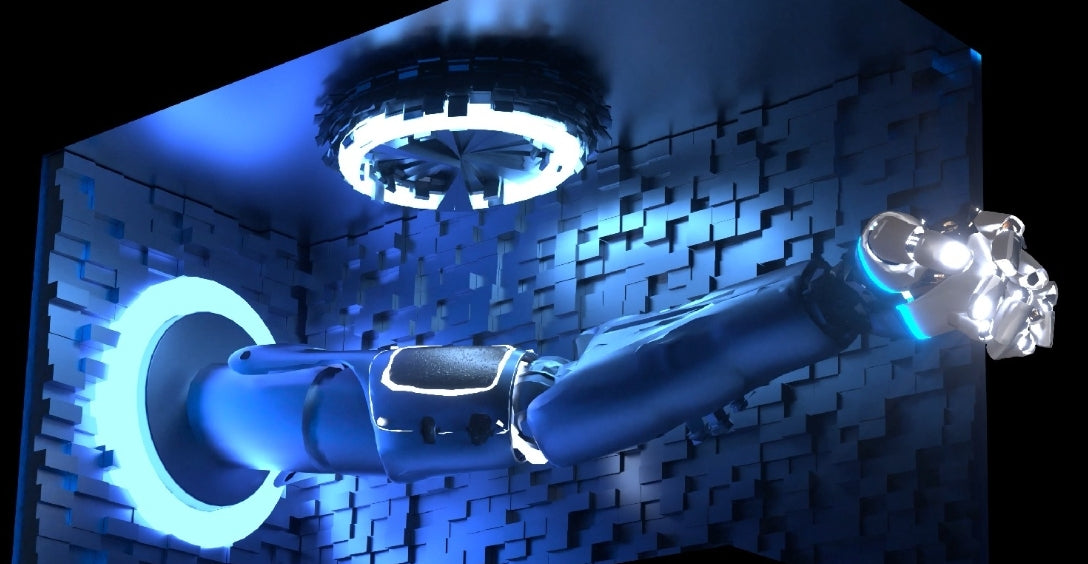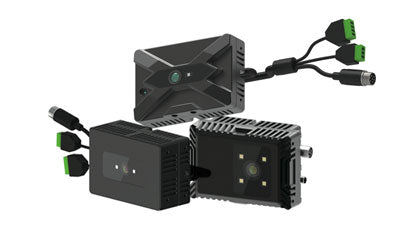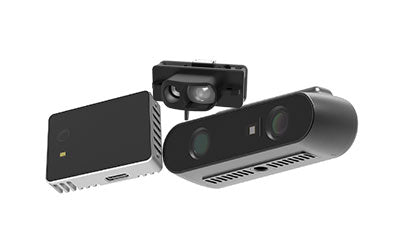TOF + Large Models: Powering Multimodal AI with 3D Perception Data

With the rapid advancement of artificial intelligence, the integration of large language models (LLMs) and multimodal sensing has become a key driver in advancing the intelligent era. In particular, Time-of-Flight (TOF) technology, with its precise depth measurement capabilities, provides a rich data dimension and solid foundation for multimodal intelligent understanding. This article explores how TOF technology, when combined with large models, empowers various applications such as intelligent robotics, autonomous navigation, and behavior prediction—ushering 3D perception into the 'millimeter era.'
What is 3D Machine Vision?
3D machine vision refers to the use of three-dimensional imaging technologies to acquire the spatial information of objects, enabling machines to “understand” their shape, size, and position in space. Unlike traditional 2D vision, which captures only flat images, 3D vision incorporates depth information, giving machines a stereoscopic sense similar to human vision.
Common 3D machine vision technologies include:
-
Structured Light: Projects a specific light pattern onto the surface of an object; the deformation of the pattern is used to calculate depth.
-
Stereo Vision: Simulates human binocular vision using two cameras and triangulation to obtain 3D information.
-
Time of Flight (TOF): Measures the time it takes for light to travel to and return from an object to calculate distance.
-
Laser Triangulation: Uses a laser and angle changes to capture an object’s surface profile.
-
Light Curtain Scanning (Sheet-of-Light): Projects a line of light across an object’s surface and scans it to create a 3D structure.
1. Background: Integrating Large Language Models with Multimodal Sensing
Large language models (LLMs) have demonstrated remarkable capabilities in natural language processing and cognitive reasoning. Meanwhile, multimodal sensing captures information across dimensions such as vision, sound, and touch. With the rapid expansion of the 3D machine vision market, integrating 3D depth data into multimodal systems is becoming critical to achieving intelligent understanding.
For example, in robot vision systems (robots 3D), combining semantic understanding with 3D spatial perception allows for more precise environmental awareness and interaction.
2. TOF-Generated 3D Point Clouds and Structured Depth Data
TOF technology measures the time modulated light signals take to travel to and from object surfaces, allowing for real-time calculation of distances. This results in high-precision 3D depth maps (TOF 3D sensor) and rich point cloud data. These point clouds represent the spatial structure of the target objects using coordinates, accurately capturing their shape, dimensions, and relative positions—greatly enhancing the understanding of complex environments.
Compared to traditional 2D imaging, TOF depth data overcomes challenges like lighting changes and occlusion, delivering stable, real-time spatial information. This supports high-accuracy perception and analysis in dynamic scenes, making TOF a core sensor in high-end applications such as:
-
3D SLAM Navigation Systems (3D SLAM): Uses TOF depth data to build real-time 3D maps, enabling precise localization and path planning for robots and drones.
-
Automated Guided Vehicle (AGV) Navigation (AGV navigation methods): Identifies obstacles and paths from TOF point cloud data to ensure efficient and safe logistics operations.
-
Robot Positioning and Operation: Enhances environment perception and object recognition, supporting precise manipulation and human-machine interaction.
-
3D CCTV Smart Surveillance: Enables 3D recognition and behavior analysis of people and objects for more intelligent security monitoring.
As algorithms and hardware continue to improve, TOF point cloud data is becoming increasingly real-time, higher in resolution, and more resistant to interference. This is further accelerating development in autonomous driving, smart manufacturing, and smart cities. TOF’s accurate spatial sensing capabilities are becoming a vital cornerstone in building multimodal intelligent understanding systems.
3. TOF Data in Object Recognition, Spatial Understanding, and Behavior Prediction
With the development of large language models (LLMs) and AI technologies, high-precision 3D spatial data captured by TOF sensors is showing tremendous potential across various domains. Combined with deep learning and natural language processing, TOF data can be more intelligently interpreted and leveraged—pushing intelligent systems toward higher-level cognition and decision-making.
-
Object Recognition
TOF sensors provide 3D depth information, enabling models to distinguish targets not just by 2D texture and color, but also by their spatial shape and distance features. For example, in warehouse logistics, models can accurately identify and classify stacked or overlapping goods, avoiding recognition errors caused by occlusion in traditional 2D vision—dramatically improving accuracy and efficiency. -
Spatial Understanding
By fusing TOF-generated depth maps with RGB camera images, systems can construct high-precision 3D environment models that restore spatial layouts and structural details in real time. These models provide solid spatial support for robot navigation, path planning, and task allocation—enhancing automation systems’ adaptability and safety in complex, dynamic environments. -
Behavior Prediction
Using continuous 3D motion trajectory data captured by TOF sensors, and combining it with the sequential reasoning capabilities of large language models, systems can analyze and predict behaviors of people, robots, or vehicles. This improves response time in intelligent surveillance and enhances motion coordination and safety in collaborative human-robot environments.
Applications combining TOF data and large language models are significantly elevating the intelligence level of fields such as robotics (3D robotics company), automated logistics (AGV material handling), and smart manufacturing. These systems now feature more accurate environmental perception, more flexible decision-making, and safer operational assurance—driving the next wave of intelligent industry and smart city development.
4. The Significance of TOF Depth Maps in Multimodal Training Data
In the current multimodal artificial intelligence (AI) training systems, TOF (Time-of-Flight) depth maps play an irreplaceable role as critical carriers of spatial information. Compared to traditional RGB images, TOF depth maps provide direct 3D geometric structure data, significantly enriching the dimensions and informational depth of training datasets and enhancing models' overall perception capabilities and adaptability.
Firstly, TOF depth maps effectively compensate for the shortcomings of traditional RGB images in complex environments. Factors such as varying lighting conditions, shadow occlusion, and cluttered backgrounds often lead to information loss or misinterpretation in 2D images. In contrast, depth maps offer stable and accurate spatial geometric constraints based on distance information, helping models more accurately understand object shapes and spatial relationships within scenes. The integration of geometric data significantly improves the robustness and discriminative power of visual semantics.
Secondly, RGBD cameras—which capture both color and depth information simultaneously—enable the fusion of multimodal data, injecting rich spatial and semantic features into training datasets. This multidimensional data fusion not only drives algorithmic innovations in 3D vision systems, but also advances visual-based localization and mapping technologies such as visual SLAM (Simultaneous Localization and Mapping), empowering robots and intelligent devices with enhanced environmental awareness and autonomous navigation capabilities.
Furthermore, thanks to advancements in semiconductor processes and packaging technologies, 3D TOF cameras are becoming increasingly lightweight, low-power, and compact. This trend allows high-precision TOF sensors to be widely embedded into various AIoT devices and smart hardware, enabling real-time 3D perception and edge-side data preprocessing. As a result, reliance on cloud computing resources is significantly reduced, while responsiveness and system security are improved.
In summary, the incorporation of TOF depth maps into multimodal training data not only enriches a model’s spatial comprehension but also accelerates the deep application and widespread deployment of intelligent vision technologies across sectors such as robotics, smart manufacturing, AR/VR, and autonomous driving. TOF has become an indispensable core component in future intelligent perception systems.
5. TOF Support in Integrated AI Systems for Perception and Cognition
In current multimodal AI training frameworks, TOF depth maps serve as essential carriers of spatial data, playing an irreplaceable role. Compared to simple RGB images, TOF depth maps offer direct 3D geometric structure data, greatly enhancing the dimensionality and richness of training data, and improving the comprehensive perception and adaptability of models.
Firstly, TOF depth maps effectively address the limitations of traditional RGB images in complex environments. Illumination changes, shadow occlusion, and cluttered backgrounds often lead to missing or incorrect 2D image data, while depth maps, based on distance information, provide stable and precise spatial geometry constraints that help models better interpret object shapes and spatial relationships. The introduction of geometric data significantly enhances the robustness and discrimination capability of visual semantics.
Secondly, RGBD cameras combine color and depth data acquisition, enabling multimodal data fusion and enriching datasets with spatial and semantic features. This joint training of multidimensional data supports breakthroughs in 3D vision systems, and advances technologies like visual SLAM, empowering intelligent machines with enhanced environmental perception and autonomous navigation.
In addition, with ongoing improvements in semiconductor and packaging technologies, 3D TOF cameras continue to evolve toward lighter, lower-power, and smaller designs. This enables high-precision TOF sensors to be embedded in a wide range of AIoT devices and smart hardware, supporting real-time 3D perception and edge-side data processing. Such capabilities reduce dependence on cloud computing, enhance response speed, and strengthen system security.
In conclusion, TOF depth maps enrich spatial understanding in multimodal AI training and accelerate the integration of intelligent vision in diverse fields such as robotics, smart factories, AR/VR, and autonomous systems. They have become a foundational element in intelligent perception systems of the future.
Conclusion
With the deep integration of TOF technology and large language models, 3D perception-driven multimodal intelligence has entered the 'millimeter era.' Looking ahead, powered by a new generation of semiconductors in 2024 and advanced packaging technologies, TOF chips will play a greater role across consumer electronics, intelligent robotics, and industrial automation. Through continuous innovation, TOF will become a vital pillar in achieving full-scenario, multidimensional intelligent perception and cognition.
Synexens Industrial Outdoor 4m TOF Sensor Depth 3D Camera Rangefinder_CS40
Our professional technical team specializing in 3D camera ranging is ready to assist you at any time. Whether you encounter any issues with your TOF camera after purchase or need clarification on TOF technology, feel free to contact us anytime. We are committed to providing high-quality technical after-sales service and user experience, ensuring your peace of mind in both shopping and using our products






